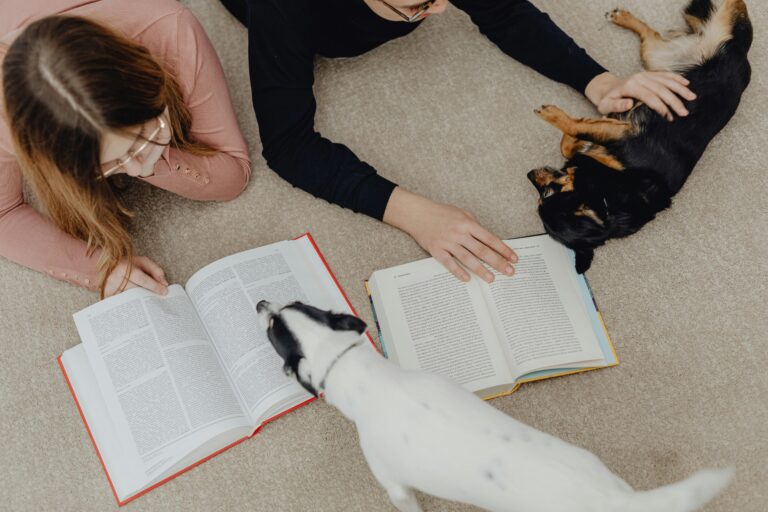As summer winds down and school routines return, it’s not just kids who feel the shift. Dogs do too. After weeks of full-house activity, constant playtime, and flexible days, your dog may struggle with the sudden drop in stimulation and attention.
Many owners report behavior changes like barking, chewing, bathroom accidents, or even signs of separation anxiety once the kids go back to school. These reactions are common, but they don’t have to become long-term problems. With some proactive training and structure, you can help your dog adjust smoothly to the new family routine.

Why Dogs React to Routine Disruptions
Dogs thrive on consistency. They rely on patterns to feel safe and secure. So when those daily habits change, your dog may become confused or unsettled.
Back-to-school transitions typically include:
- Less daytime interaction or play
- Longer periods of alone time
- Morning hustle and bustle
- Emotional energy shifts in the household
Suddenly, your dog may find themselves alone in a quiet house with no clear sense of what comes next. If they’re used to a full house and attention around the clock, this can trigger stress behaviors.
Build Predictability Into Their Day
Start by helping your dog understand the new routine before it fully takes effect. Dogs adapt best when change is introduced gradually.
Try this one to two weeks before school starts:
- Wake up and feed them at the new school-time hour
- Schedule quiet alone time during hours when the house will be empty
- Practice morning routines with backpacks, shoes, and doors opening
- Wind down play and activity at the same time each evening
By simulating the school schedule ahead of time, your dog learns what to expect without being overwhelmed.
Reinforce Calm, Independent Behaviors
If your dog is used to constant engagement, now is the time to teach independence. One of the best tools for this is the “Place” command, which encourages calm, stationary behavior on a designated spot like a mat or dog bed. Practicing this during busy times, such as while you’re packing lunches or helping kids with homework, builds focus and impulse control.
We go deeper into this skill in our post on how to train a reliable Place command for summer guests and chaos. The same principles apply during the school year, especially when your dog needs to settle down in an energetic environment.
Create Mental Stimulation While You’re Gone
Boredom is one of the biggest drivers of unwanted behaviors. If your dog is left alone with nothing to do, they may turn to chewing furniture, barking excessively, or pacing the house.
Keep their brain engaged with activities like:
- Puzzle feeders and frozen KONG toys
- Scent-based enrichment games
- Rotating chew toys (to keep novelty fresh)
- Safe access to windows with a view of the yard
Engaging your dog’s mind while you’re away can drastically reduce anxiety. For detailed enrichment strategies, we also recommend our guide on keeping your dog active when it’s too hot outside, since many of those indoor games work great during school hours.
Obedience Training During Transitional Seasons
Times of routine change are perfect for strengthening obedience. As distractions increase and structure shifts, your dog will benefit from consistent expectations and accountability.
Our Basic Obedience Program is a great fit for families preparing their dog for more independence, better impulse control, and calm behavior in high-activity households.
Learn more about our Basic Obedience Program
Watch for Signs of Separation Anxiety
If your dog becomes destructive, vocal, or extremely distressed when left alone, they may be experiencing true separation anxiety. This is more serious than boredom and often requires structured training support.
Warning signs include:
- Panting, pacing, or drooling when you’re preparing to leave
- Barking or howling for extended periods
- Accidents in the house after being previously house trained
- Destruction of doors, windows, or furniture near exit points
If you notice these behaviors, don’t wait. Seek professional help. Teaching independence and confidence is absolutely possible with the right tools and consistency.
Bonus Tip: Involve the Kids
Make back-to-school training a family effort. Assign small tasks to your children to help reinforce good behaviors and include your dog in the new routine.
Ideas include:
- Have your child practice a short training session before school
- Use meal times to practice obedience commands like “sit” and “stay”
- Let older kids help fill enrichment toys or prepare frozen snacks
- Designate time after school for play or a structured walk
Involving your children in your dog’s routine builds trust and shared responsibility.
External Resource: Understanding Back-to-School Anxiety in Dogs
The American Kennel Club has a helpful article on how to manage your dog’s back-to-school anxiety with practical suggestions for easing stress and building resilience. It’s a great companion read for families preparing their pup for more alone time.
Final Thoughts
Back-to-school season doesn’t have to mean anxiety and confusion for your dog. With the right structure, training, and mental stimulation, your pup can thrive in the new routine and even look forward to those quiet hours.
If your dog needs help adjusting to longer periods alone or managing their energy during transitions, we’re here to help.
Contact our Dayton dog training team today to set up a customized plan that fits your dog and your family’s needs.
Social Media Teaser:
Back-to-school blues aren’t just for kids. Learn how to help your dog adjust to routine changes with structure, enrichment, and training.
Would you like a certified trainer to contact you?

